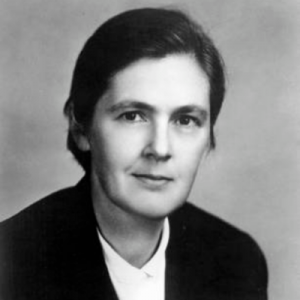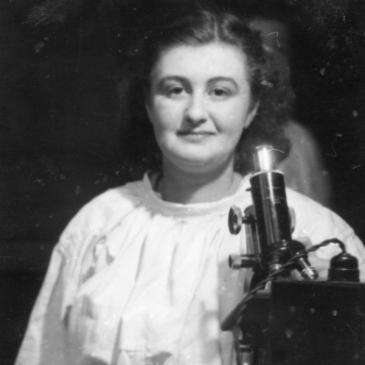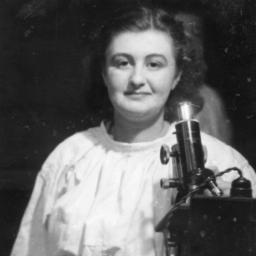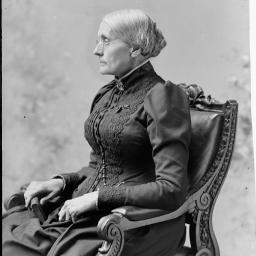Frances Kathleen Oldham Kelsey

Frances “Frankie” Kathleen Oldham Kelsey. Kelsey was universally credited with sparing the US the damage inflicted by the drug thalidomide to the human nervous system by refusing to approve the drug for distribution in the US. As a result of her actions, major changes in drug regulations in the US resulted and the rest of the world.
Frances Kelsey was born on the rural Cobb Island, on Vancouver Island, British Columbia on July 24, 1914. She was the second child of an Australian father and Scottish mother. Known as “Frankie” all her life, she learned to read by listening to her mother teach her two-year-older brother. She wanted to be a scientist from a very young age and graduated high school at age 15. She then earned a Bachelor of Science degree in 1934 at McGill University in Montreal at age 20, hoping to go into laboratory work. However, she graduated at the height of the Depression and thus few jobs were available to women. Instead, Kelsey obtained a master’s degree in pharmacology in 1935. After finishing that degree, a professor urged her to study at the University of Chicago with E.M.K. Geiling, who established the country’s first pharmacology lab. She listened and eventually earned a PhD in Pharmacology, becoming the first woman to do so.
Kelsey worked with Geiling on a 1937 Food and Drug Administration (FDA) contract to find out why 71 adults and 34 children died after taking a new anti-bacterial product, Elixir Sulfanilamide. The lethal ingredient turned out to be diethylene glycol, or anti-freeze, which tastes sweet. This pharmaceutical disaster resulted in legislative changes to the 1906 Food and Drug Act. Known as the 1938 Food, Drug and Cosmetic Act, it required the disclosure of product ingredients, tests of safety and approval by the FDA and was a major advancement in consumer protection. Next, Kelsey, Geiling and another pharmacologist, Dr. Fremont Ellis Kelsey, worked to find a substitute for quinine, a necessary component of a malaria medication. Malaria was sickening soldiers fighting in the tropics during World War II. During the experiments, the team noted many drugs severely affected fetuses of pregnant animals. Following this work, Kelsey spent a month studying embryology, the science of fetal development, at the Carnegie Institute in Baltimore.
Kelsey and Fremont Kelsey married in 1943 and soon became parents of two daughters. At the time, two persons in the same household could not work in the same facility, prompting Kelsey to become a medical doctor. A year later, Kelsey was an editorial assistant at the prodigious Journal of the American Medical Association (JAMA). In this position, Kelsey noted that many papers of drug studies were merely in testimonials and not supported by hard science.
Two years later Kelsey’s husband accepted the chairmanship of pharmacology at the University of South Dakota and the family relocated. There, Kelsey completed a fellowship in the new field of radioisotopes (the study of chemicals that release radiation as they break down) and covered the medical practices of many physician colleagues across the state.
By 1960 the Kelseys decided they preferred an urban life and moved to Washington, DC. Kelsey took a position at the FDA, continued to publish academic papers and in textbooks, and studied several major organ systems in animals. In DC, Kelsey applied for the position of the Head of the NDA, New Drug Application, a division of the FDA.
On September 8, 1960, Kelsey received her second NDA from a Cincinnati company, Richardson-Merrell, for a sedative called Kevadon, the US tradename for thalidomide. At the time, the NDA had to be processed within 60 days or the company had the automatic right to market the product. In addition, drug companies were also permitted to freely distribute products to doctors if the packaging was labeled “experimental.” Richardson-Merrell expected to officially launch in 6 months-by March 6, 1961-- and they were also freely distributing samples and touting the sedative as extremely safe, even for children, and effective against the morning sickness of pregnancy.
Kelsey’s team found multiple omissions in the application and rejected it, thus angering the company. Richardson-Merrell submitted additional data, which was again incomplete and inadequate. In all, there were multiple rejections of the NDA, each time provoking increasingly aggressive company visits, amounting to approximately 50 visits to the office over 18 months. During this time in the UK, Australia, Europe, Japan and West Germany, doctors were delivering an alarming rate of malformed babies with “phocomelia” or what doctors called seal limbs and increases in the rates of miscarriages. Other countries began pulling the drug from market. On March 8, 1962, Richardson-Merrell withdrew their application from the FDA after learning of the serious side effects. In July 1962, a Washington Post reporter wrote the thalidomide story on the front page. Kelsey’s refusal to approve thalidomide for sale in the US prevented the births of thousands of seriously malformed babies. President John F. Kennedy awarded Kesley the President’s Medal of Service.
Kelsey continued to work for the FDA well into her 90’s, and eventually moved to Ontario, Canada to live with one of her daughters. She died peacefully on August 7, 2015, at the age of 101.
-
Essinger, James and Sandra Koutzenko. Frankie: how one woman prevented a pharmaceutical disaster. North Palm Beach, FL: Blue Sparrow Books, 2018.
-
Evans, Harold. “Thalidomide: how men who blighted lives of thousands evaded justice.” November 14,2014. https://globalfreedomofexpression.Columbia.edu/cases.the-Sunday-times-v-United-Kingdom. Accessed November 1, 2022.
-
Florence, A Leslie. “Is thalidomide to blame?” British Medical Journal, 2 : 1954.
-
“Frances Oldham Kelsey.” Wikipedia. Accessed November 4, 2022.
-
Hoffman, Roald. “Thalidomide: when something is wrong.” The Same and Not the Same. New York: Columbia University Press, 1995. 129-138.
-
Martin, Iain. “The thalidomide scandal and the forgotten role of Enoch Powell.” Wall Street Journal. January 14, 2010. Assessed November 25, 2022.
-
McFadyen, Richard E. “The FDA Regulations and Control of Antibiotics in the 1950’s: the Henry Welch Scandal, Félix-Martí-Ibáñz Company, Charles Pfzier Co. Bulletin of the History of Medicine.” Baltimore: Johns Hopkins University Press, 153 (2): 159-169. Accessed November 26, 2022.
-
Shearer, Benjamin F. and Barbara S. Shearer (eds). Notable Women in the Life Sciences: a Biographical Dictionary. Westport, CT: Greenwood Press, 1996. 220-226.
-
Silver, Joan Micklin. A private matter. (DVD). HBO Video. ISSN: 83316-44458-0. (2006).
-
Stephens, Trent and Rock Brynner. Dark Remedy: The Impact of Thalidomide and its Revival as a Vital Medicine. Perseus Publishing: Cambridge, MA, 2001.
-
Tantibanchachai, Chanapa. “The embryo encyclopedia.” January 22, 2014. ISSN: 1940-5030. https://embryo.asu.edu/handle/10776/7510. Accessed November 25, 2022.
-
Truman, Margaret. “The doctor who said no” in Women of Courage: From Revolutionary Times to the Present. New York: William Morrow and Co. NY, 1976. 219-239.
MLA – Erick, Miriam. "Frances Kathleen Oldham Kelsey ." National Women's History Museum. National Women's History Museum, 2023. Date accessed.
Chicago - Erick Miriam. “Frances Kathleen Oldham Kelsey ." National Women's History Museum. 2023. https://www.womenshistory.org/education-resources/biographies/bernice-johnson-reagon.
Image: By The photographer is unknown. - Image posted at Dr. Frances Kathleen Oldham Kelsey. History of Medicine Collection. National Library of Medicine. Retrieved on 2006-05-01., Public Domain, https://commons.wikimedia.org/w/index.php?curid=747686





